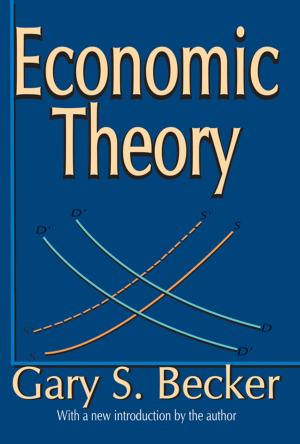Statistics Tables
For Mathematicians, Engineers, Economists and the Behavioural and Management Sciences
Nonfiction, Science & Nature, Mathematics, Business & Finance, Economics| Author: | Henry R. Neave | ISBN: | 9781136952173 |
| Publisher: | Taylor and Francis | Publication: | May 13, 2013 |
| Imprint: | Routledge | Language: | English |
| Author: | Henry R. Neave |
| ISBN: | 9781136952173 |
| Publisher: | Taylor and Francis |
| Publication: | May 13, 2013 |
| Imprint: | Routledge |
| Language: | English |
For three decades, Henry Neave’s Statistics Tables has been the gold standard for all students taking an introductory statistical methods course as part of their wider degree in a host of disciplines including mathematics, economics, business and management, geography and psychology. The period has seen a large increase in the level of mathematics and statistics required to achieve these qualifications and Statistics Tables has helped several generations of students meet their goals.
All the features of the first edition are retained including the full range of best-known standard statistical techniques, as well as some lesser-known methods that can be hard to track down elsewhere. The explanatory introductions to each section have been updated and the second edition benefits from the inclusion of a valuable and comprehensive new section on an approach to simple but powerful investigation of process data. This will help the book continue in its position as the prime statistical reference for all students of mathematics, engineering and the social sciences, and everyone who needs effective methods for analysing data.
For three decades, Henry Neave’s Statistics Tables has been the gold standard for all students taking an introductory statistical methods course as part of their wider degree in a host of disciplines including mathematics, economics, business and management, geography and psychology. The period has seen a large increase in the level of mathematics and statistics required to achieve these qualifications and Statistics Tables has helped several generations of students meet their goals.
All the features of the first edition are retained including the full range of best-known standard statistical techniques, as well as some lesser-known methods that can be hard to track down elsewhere. The explanatory introductions to each section have been updated and the second edition benefits from the inclusion of a valuable and comprehensive new section on an approach to simple but powerful investigation of process data. This will help the book continue in its position as the prime statistical reference for all students of mathematics, engineering and the social sciences, and everyone who needs effective methods for analysing data.















